

That's the ratio of Democratic to Republican women in Congress. Female GOP leaders are outnumbered, outpaced, and out of office.
In our new study, “Republican Women and the GOP Gender Gap: Clearing the Primary Hurdles,” we explore why far more Democratic than Republican women are elected to Congress. The primary reason is the PRIMARY itself.
“We would benefit by having more women in office, especially in the legislature at the state and federal levels, for the different perspectives they bring.… If they're as qualified or more qualified, we should be promoting women.”
Female Republican state party leader
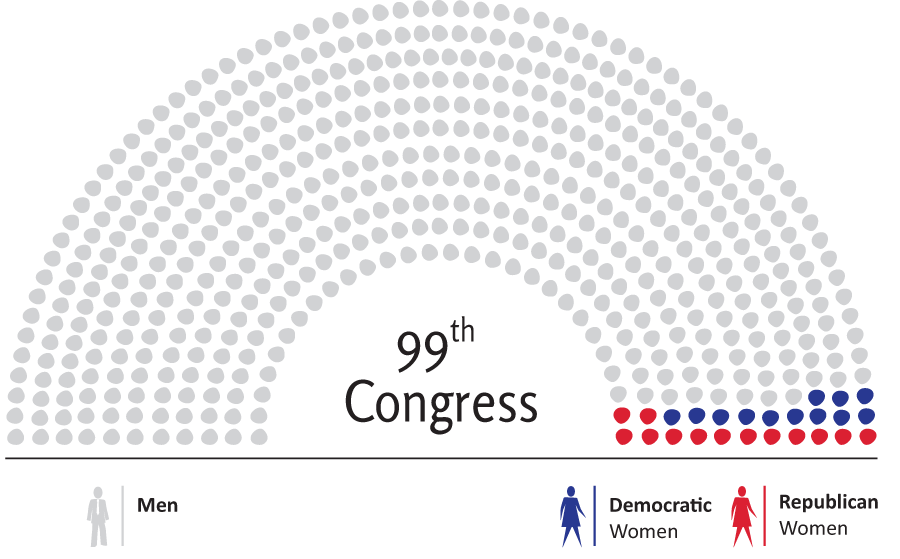
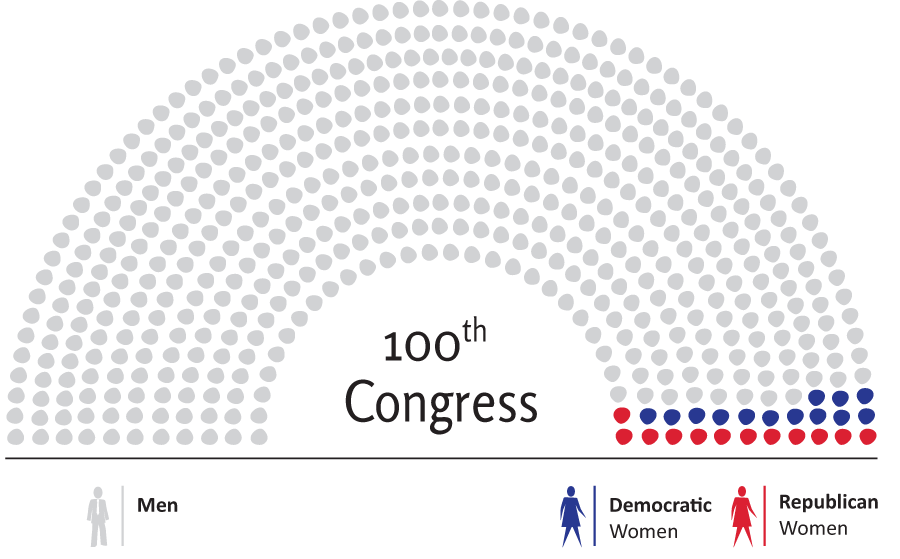
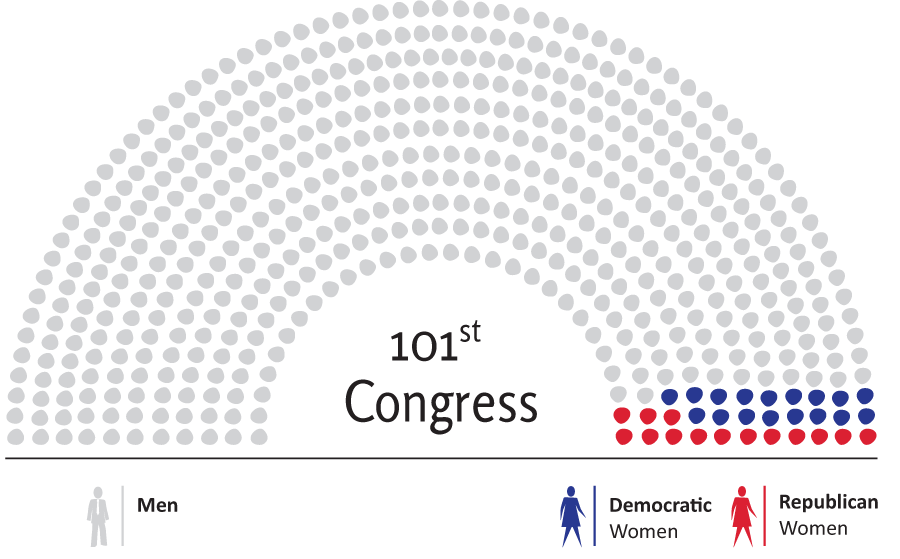
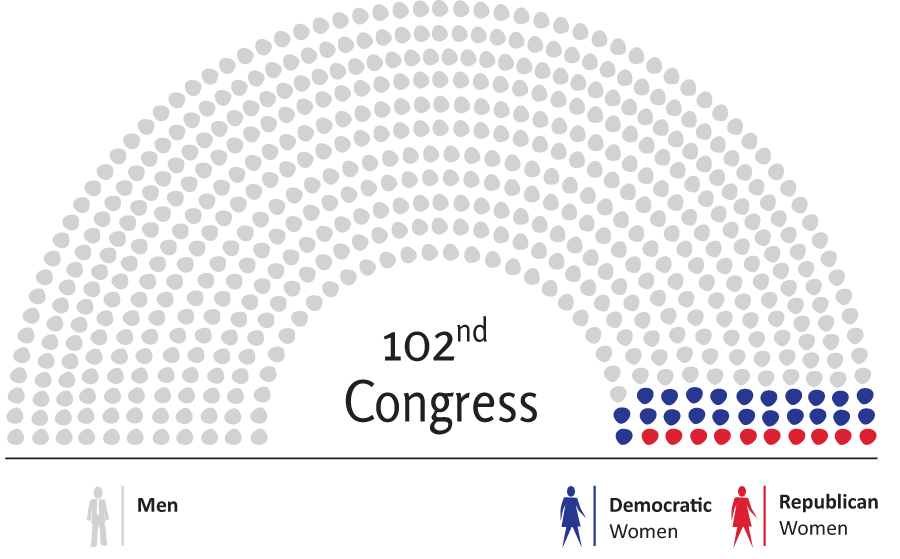
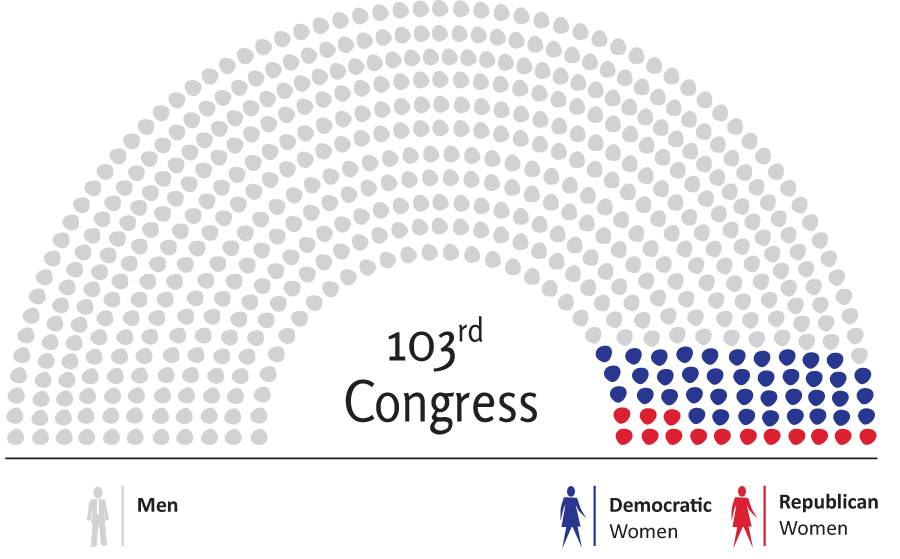
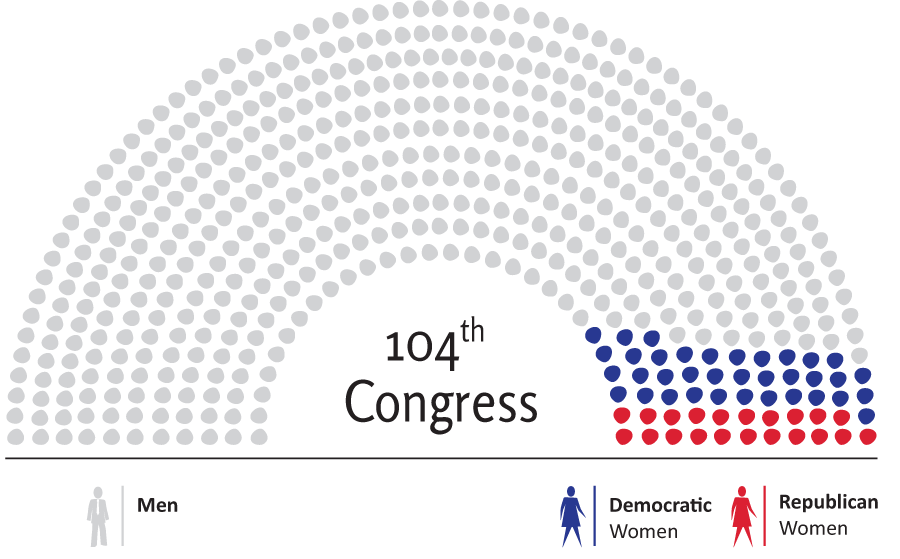
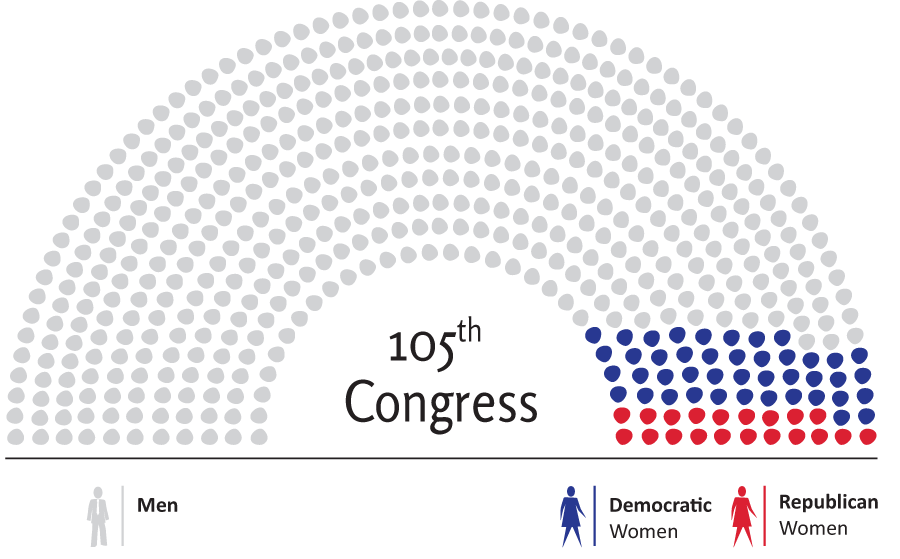
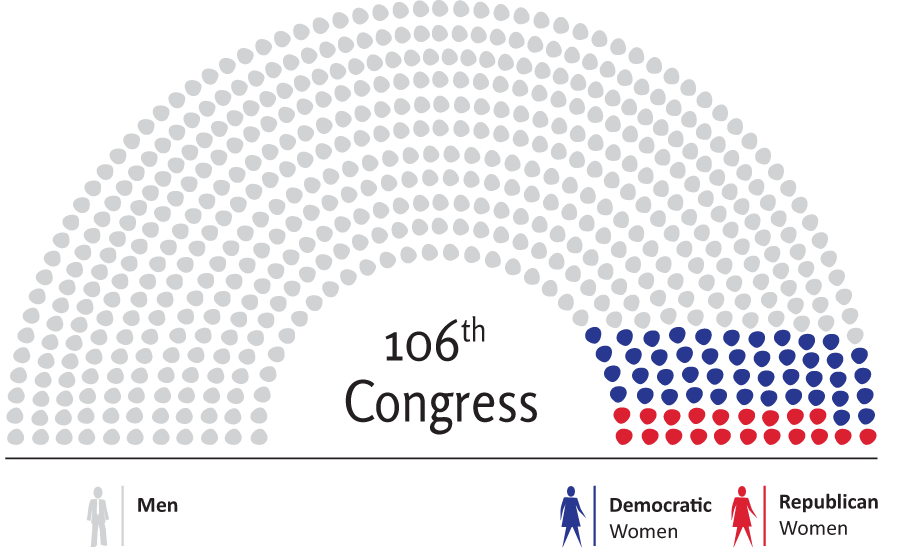
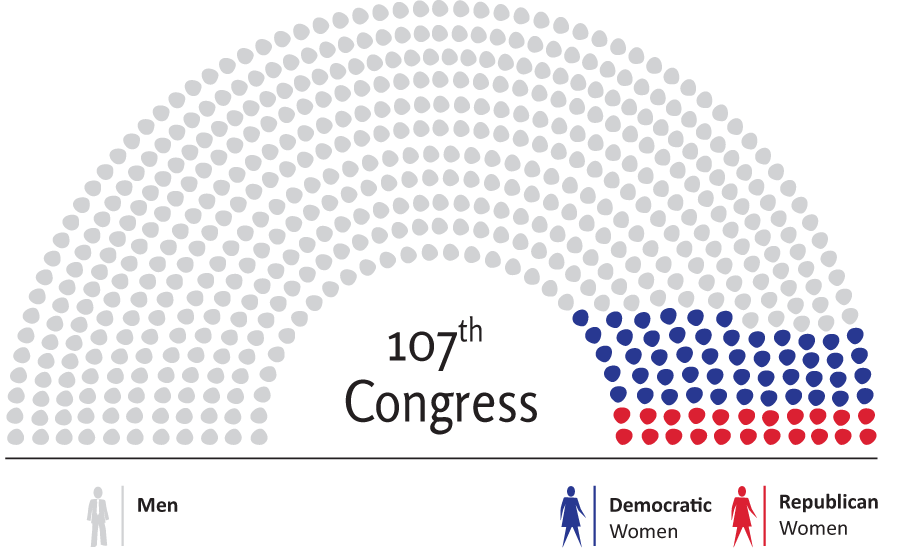
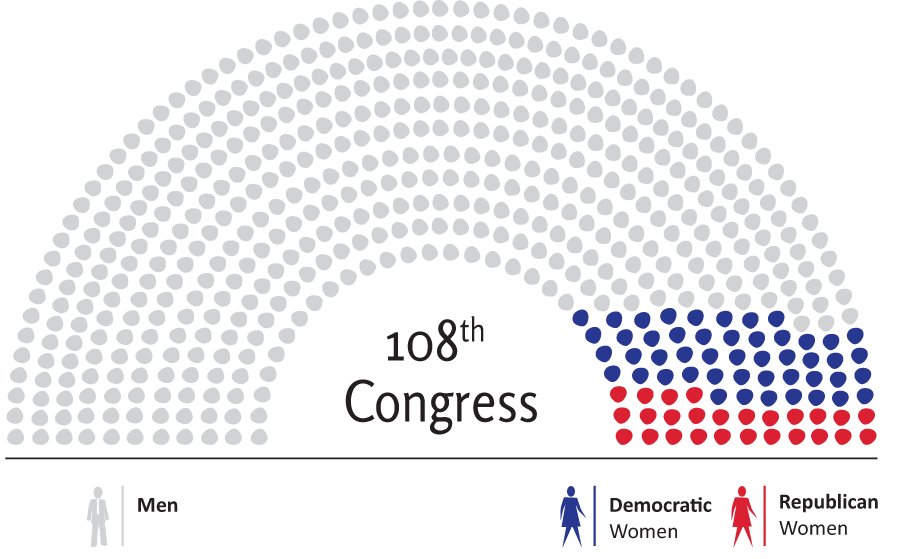
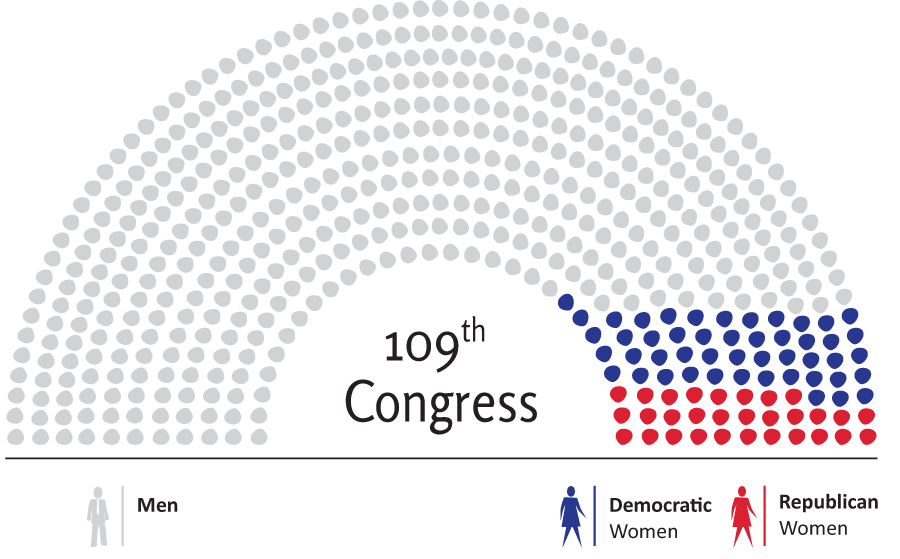
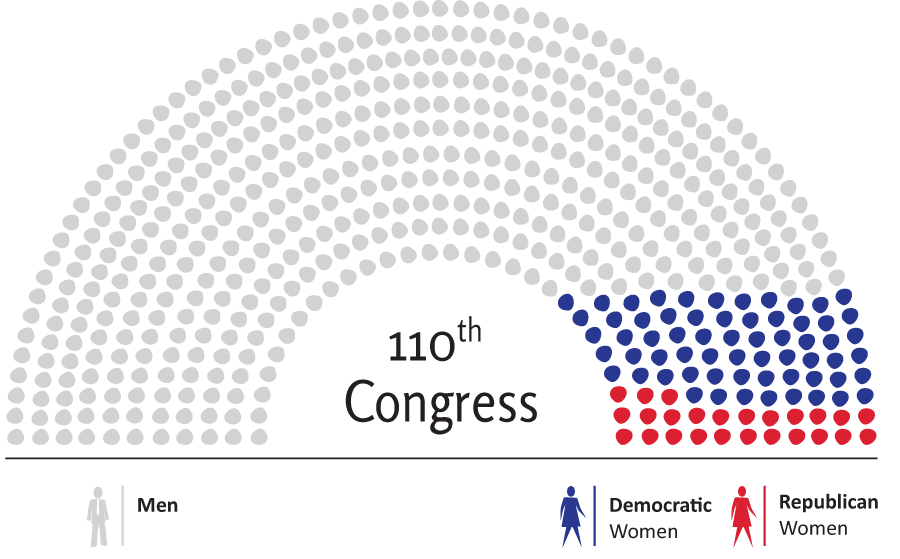
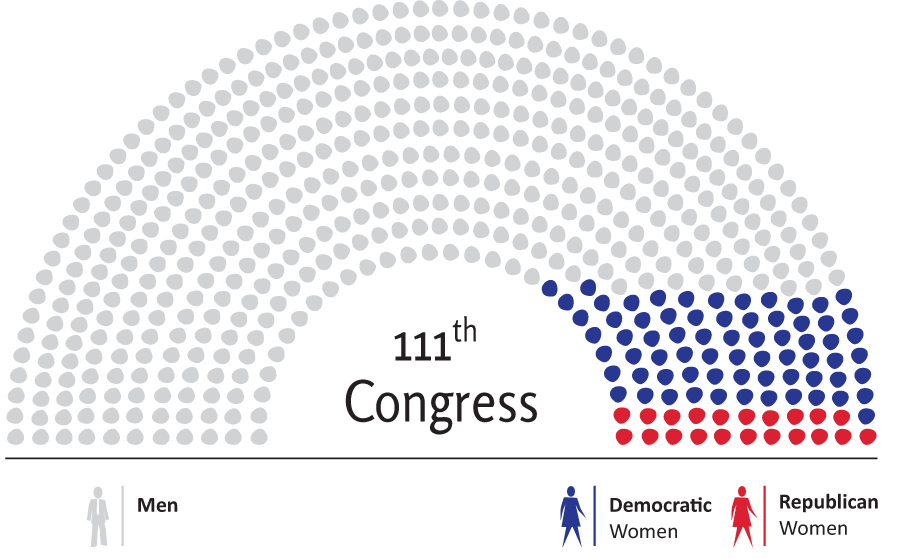
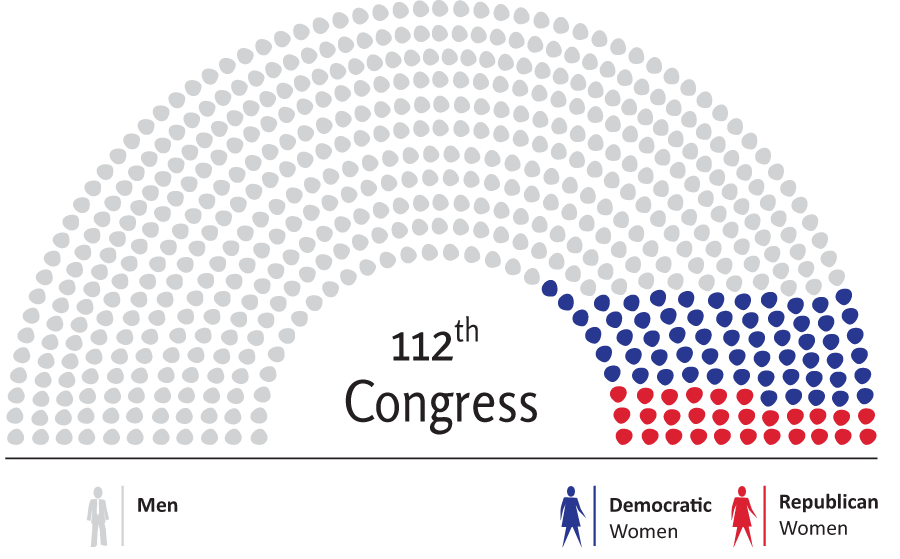
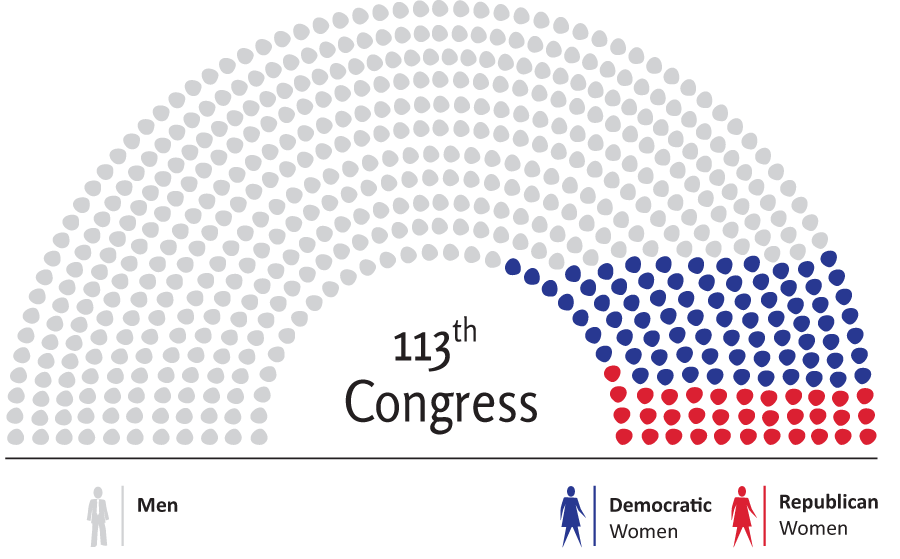
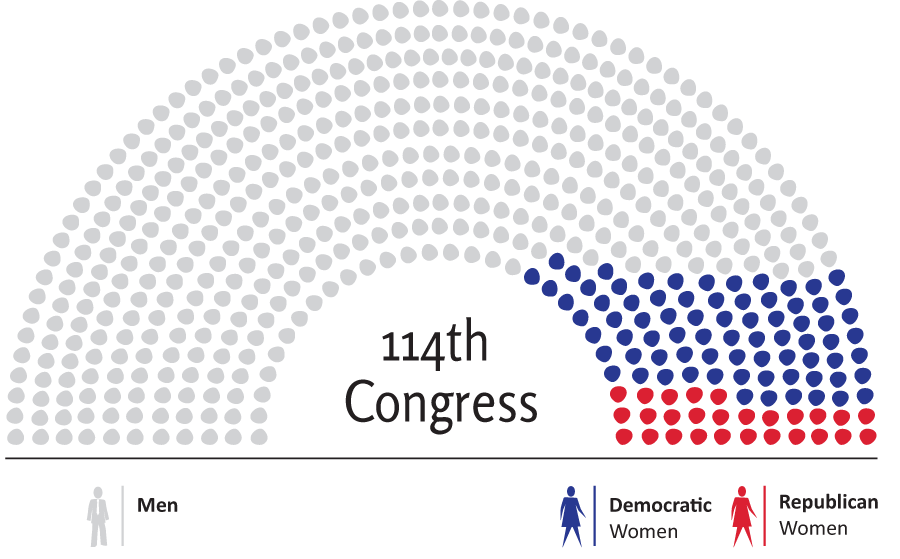
Women are inching toward gender parity in Congress, but the gains are lopsided. Of America's 535 Members of Congress, only 104 are women – 76 Democrats and just 28 Republicans. GOP women are far less likely to enter or win a primary election than their Democratic peers. Those who do run are often stuck in the starting block without adequate coaching and support. We celebrate a record 104 women in the 114th Congress. But at this rate, it will take more than 100 years to reach parity. Right the ratio
“The mounting issues facing our country are complex. If we're going to solve these problems, we can no longer afford to leave the talent of half our nation out of the conversation.”
Kerry Healey
Lieutenant Governor of Massachusetts, 2003-2006
 We're conducting and disseminating research, uniting key actors and allies, lifting up effective strategies, and convening women from both sides of the aisle.
We're conducting and disseminating research, uniting key actors and allies, lifting up effective strategies, and convening women from both sides of the aisle.
We are driving a national conversation about the need for a more reflective democracy.
Political Parity engaged five teams of leading political consultants, pollsters, and researchers to understand the lack of female Republican candidates.
Interviews
We gleaned personal perspectives about the barriers to female representation through original interviews with elected GOP women, Republican Party leaders, and fundraisers.
Surveys
We conducted an 800-person, dual-sample national survey of Republican and independent/swing primary voters, and a national mail survey of thousands of party and PAC donors.
Statistical Analysis
We analyzed data on funding, experience, and the digital campaign structure of every female congressional candidate in 2014; Federal Election Commission data on direct party and leadership PAC support for congressional candidates; and ideology scores and win rates of 10,000 congressional candidates in the last two decades.
Case Studies
We studied successful and unsuccessful female Republican congressional candidates in the 2014 primaries and general election.
“Our primaries have become a massive litmus test. It's a barrier for women. We have to do a better job of helping women be more viable in primaries.”
Male Republican national party leader
While many factors affect candidates in the race to high-level office, GOP women face higher hurdles. No single factor is make-or-break, but together they dramatically hinder Republican women's chances for electoral success.
Female GOP candidates have greater difficulty raising money, mainly because of fragmented support from the party, PACs, and donors. Political parties are hesitant to get involved in primary elections, and while there are several conservative PACs, none has the size or clout of the Democratic PAC EMILY's List to serve this same function for female GOP candidates. Many conservative donors are also unaware of Republican women's PACs, and the party's efforts to recruit and support female candidates.
While the GOP is focusing more on electing women, greater recruitment and development of female candidates can truly move the needle on women's representation. Democrats have recently outpaced Republicans in nominating women for office.
Women benefit from more encouragement to run in the first place, and there's no significant structure to shepherd GOP candidates through a primary election. With little candidate development at the local level or explicit party engagement in primaries, Republicans aren't establishing a pipeline of future federal officeholders
In the past two decades, Americans, and the candidates and elected officials seeking to represent them, have diverged sharply in ideology; conservatives have grown more conservative and liberals more liberal. Women are often perceived to be more moderate politicians. But in fact, female Republican candidates are just as conservative as their male counterparts. With a shift toward the far right among the Republican electorate, GOP women struggle to overcome the perception that they're more moderate.
“When you look at the qualities women bring, many are qualities that people all across this country are seeking. Quite often they are better listeners, work across the aisle, and are problem solvers.”
Republican congresswoman
The following charts illustrate the structural, financial, and ideological hurdles female Republican candidates face in the primary election. Expand each section for the full story.
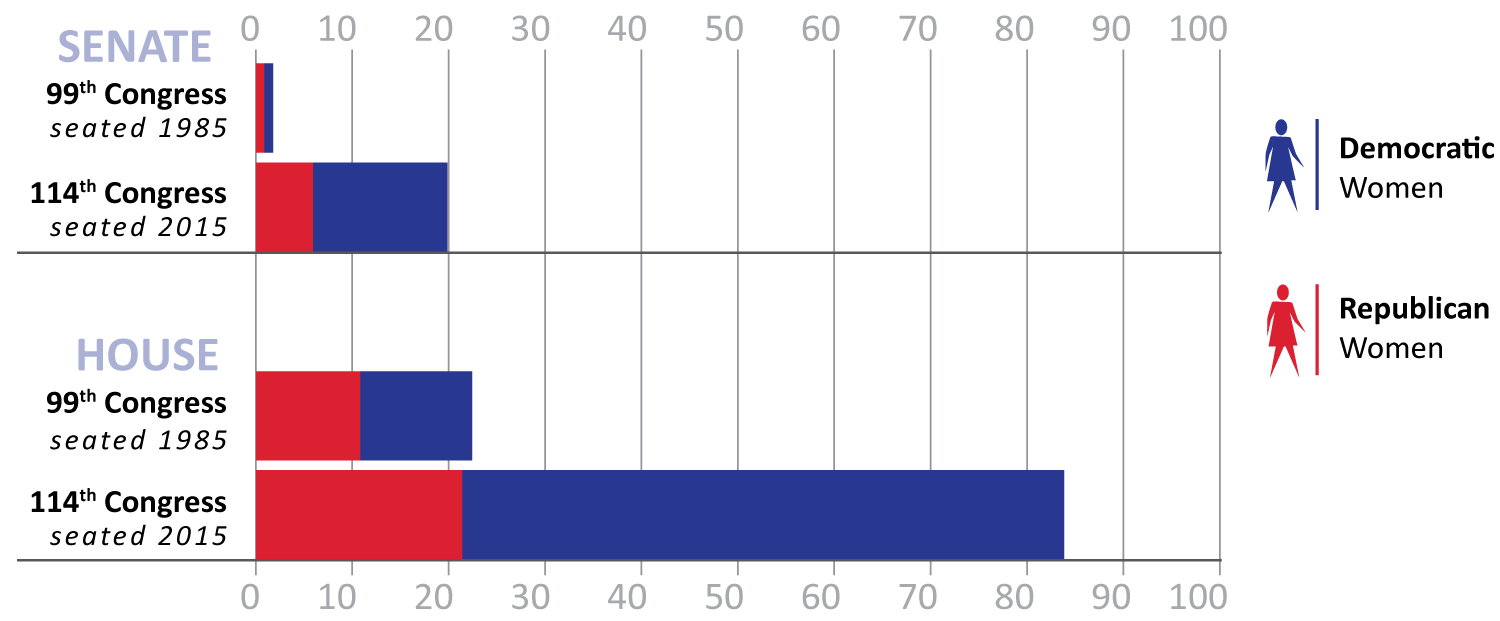
The vast majority of congresswomen are Democrats; they outnumber Republicans three to one. At one point, the breakdown was fairly equal. Since the mid-1980s, Democratic women have increased their numbers six-fold. Female Republicans have barely doubled their standings.
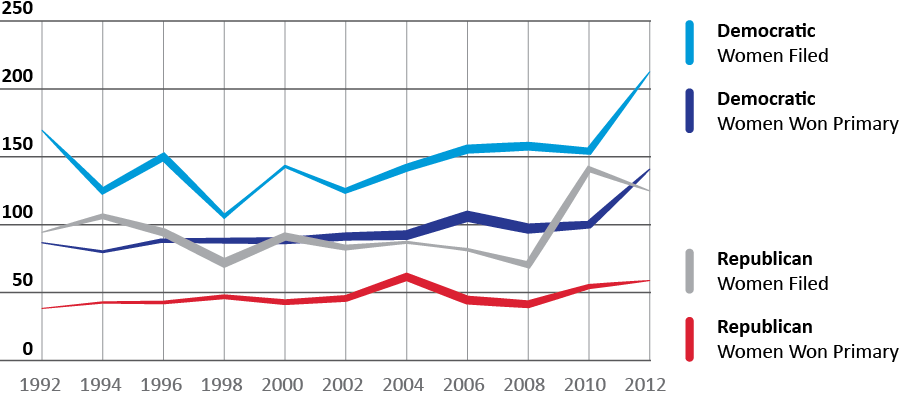
GOP women earned several historic wins in 2014, but twice as many female Democrats as female Republicans ran in House, Senate, and governors' races. Republican women are far less likely to enter or win a primary election than their Democratic peers.
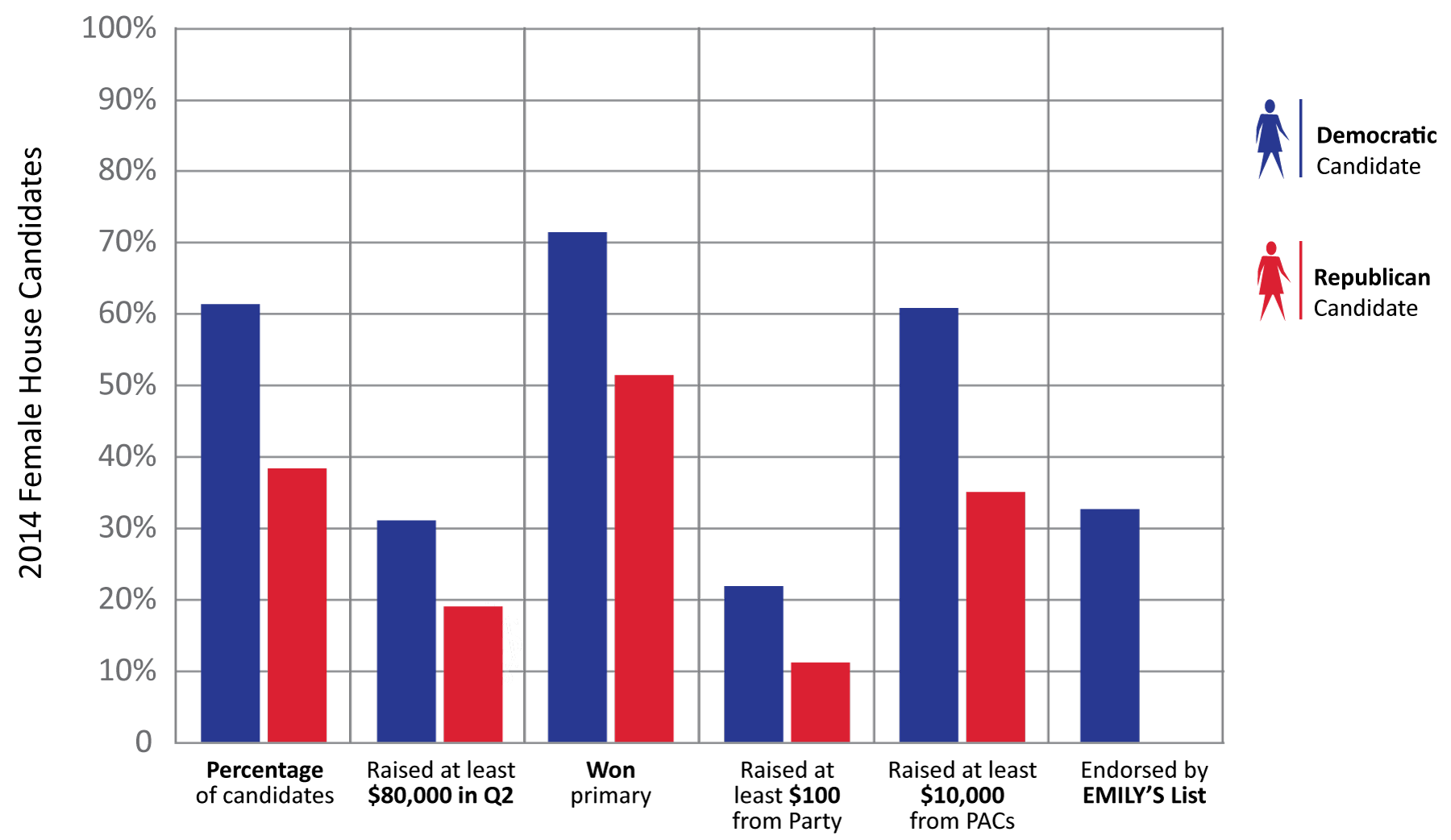
Political parties are hesitant to get involved in primary elections; most campaign funds come from PACs and individual donors. This money, however, is not readily available to Republican women. Without funding, female GOP candidates struggle to win their primaries, but they generally don't receive much party money until they do.
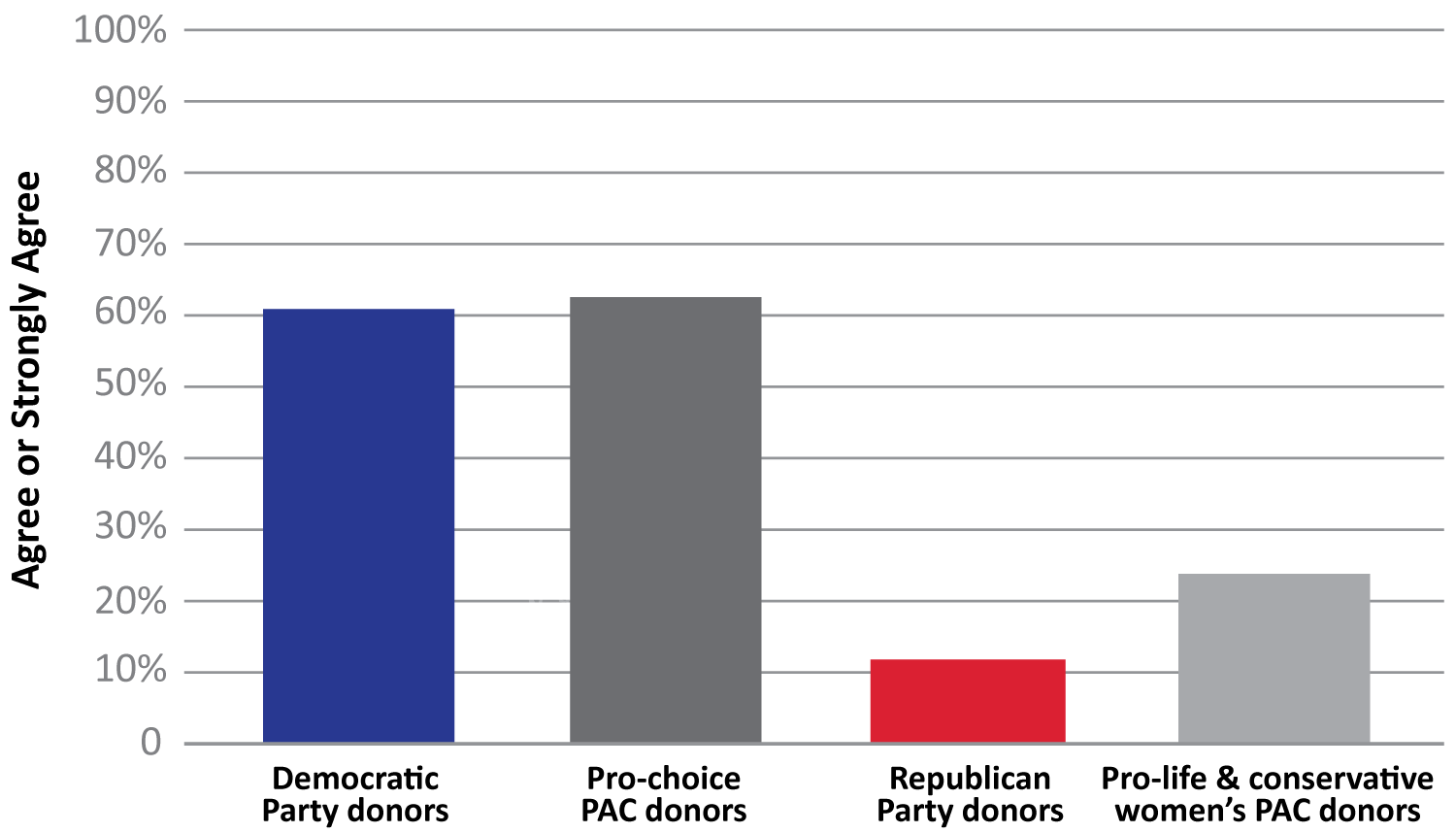
The underrepresentation of women in politics is a compelling catalyst for Democratic funders, but less so for Republicans. Democratic donors are significantly more likely than GOP donors to agree that women are excluded from political leadership. They often respond by writing a check or connecting candidates to their networks.
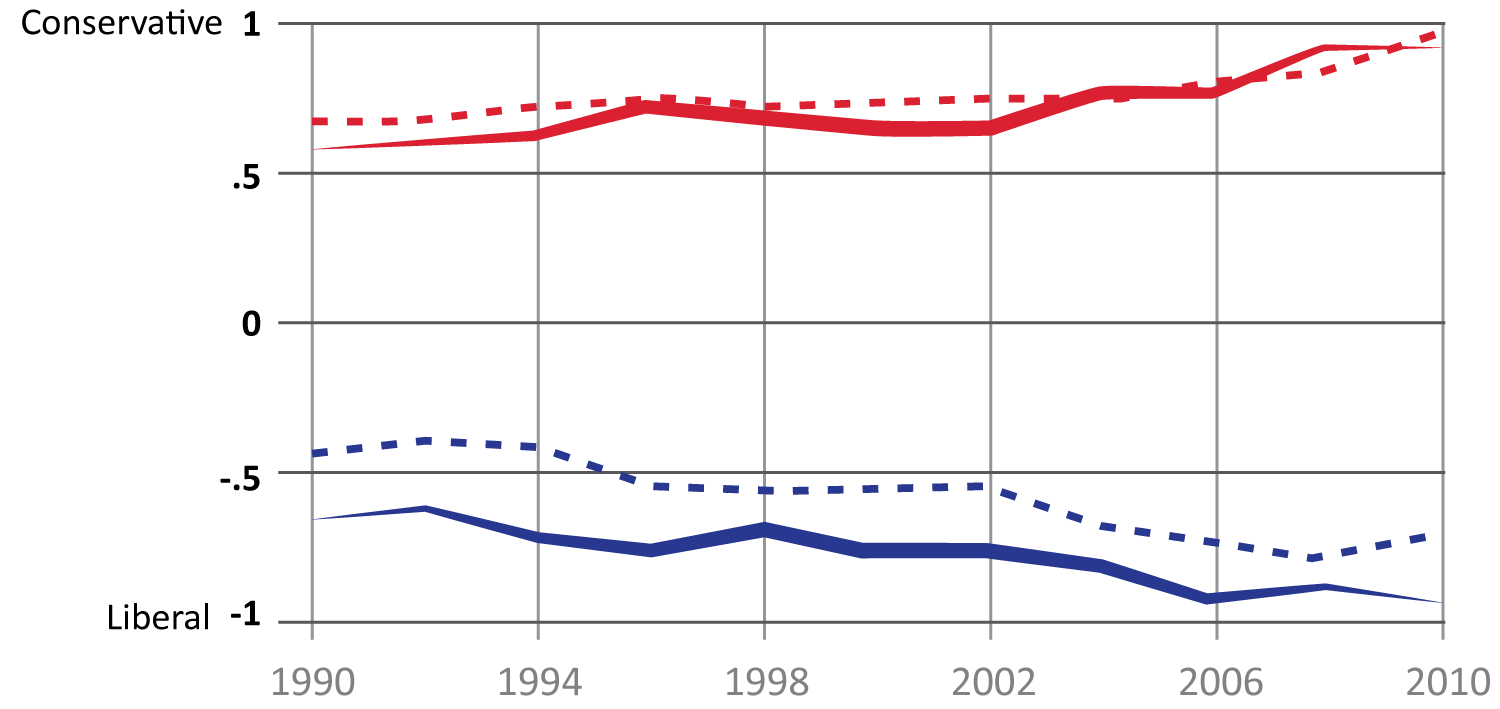
Women are often perceived to be more moderate politicians. But the female Republican candidates we studied were just as conservative as their male counterparts. Ideology scores for more than 10,000 congressional candidates over the past two decades reveal no significant differences by gender among Republicans. While they once were, GOP women candidates are not more moderate than men.
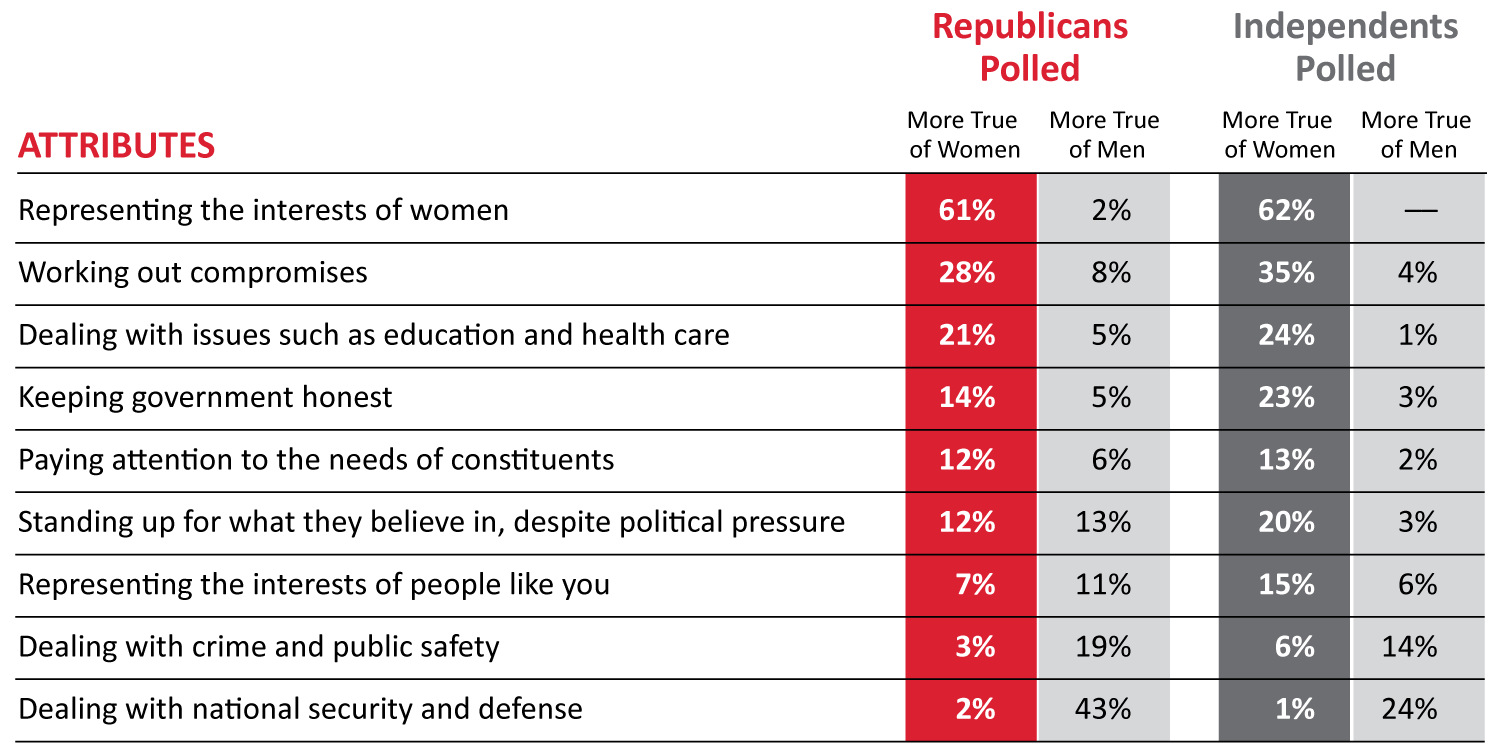
Our research reveals that twice as many independent women as independent men said they generally prefer a female candidate to a male. Women candidates are perceived by both Republican and independent voters to have an advantage on several key traits, notably working out compromises. Female voters in particular said that women have an edge over men in “keeping government honest” and “working out compromises.”
GOP women are far behind both Republican men and Democratic women in Congress. They won't gain ground without concerted effort on their behalf.
To remain relevant, the GOP can diversify its candidate pool, engage minorities and moderates, and put women on the ticket. To accelerate the recruitment of qualified women, the party can:
As our prior research indicates (hyperlink to LatinasRepresent research on Parity site), female candidates need early, tailored, and continual coaching and support. This includes:
From food to fuel, women purchase more than 50 percent of everything. But they account for only a quarter of all political contributions. Republican PACs can grow by targeting prospective women donors and encouraging them to support female candidates. Working together, women's PACS can broaden their memberships and create the infrastructure necessary to provide specialized training, expand mentorship, and build fundraising networks.
Some predict we'll be colonizing the moon before we reach gender parity in Congress. One thing is certain: We'll never get to 50 percent without elevating women on all sides.
Tweet, post, and share our stats. Encourage your federal and state legislative leaders to support efforts that advance women's political representation. Get involved, stay involved, and help us build a more reflective democracy.
Together we can get more women in the race and America back on track — potentially within election cycles, rather than centuries.